A walk in an autumn meadow — make it simple and bring just your senses. Look at the vibrant golden and purple wildflowers and luminous oranges of butterflies like the Buckeye and Monarch. Smell crisp and pungent aromas of Mountain Mint and Wild Bergamot seed heads. Listen to the song of our state bird, the Gold Finch. Or bring some gear like a camera and binoculars, perhaps a magnifying glass or loupe to bring your findings into close focus. Whatever your approach, make sure to take a slow ramble this fall.
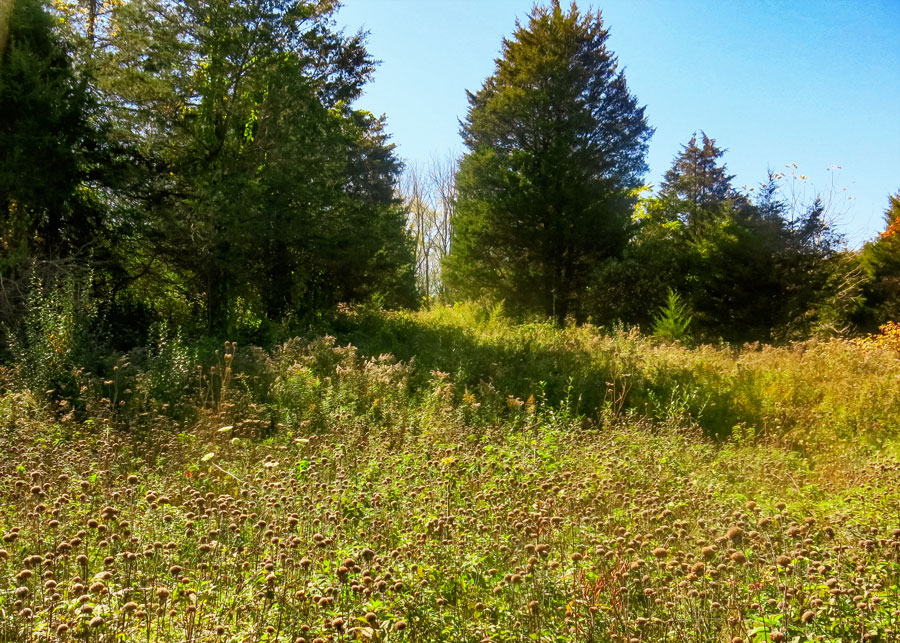
White Lake Natural Resource Area in Hardwick Township, Warren County, features a beautiful and botanically unique meadow. Limestone geology shapes all aspects of the site – the crystal clear, white-bottomed 69-acre lake and the plant communities, both forest and meadow, that surround it. The 469-acre natural area is managed by Warren County with the support of New Jersey Youth Corps.
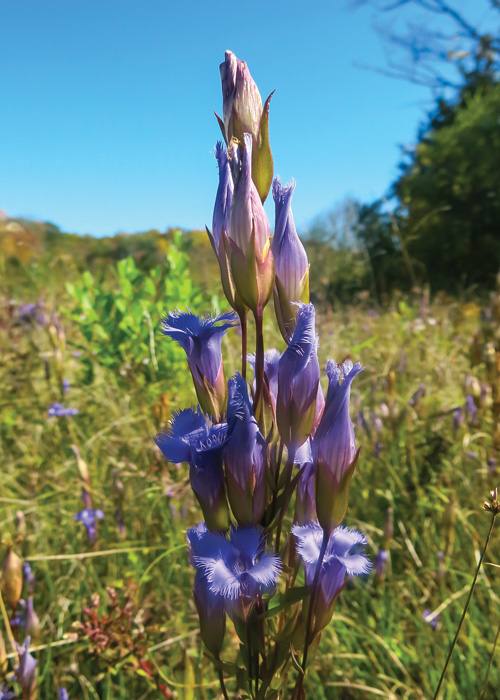
By autumn, the luminous blooms of Fringed Gentian (Gentianopsis crinita) dot the sunny, spongy edges of White Lake. At about a foot or more tall, look for clusters of periwinkle-blue flowers. The showy flowers are tubular with four fringed petals. These uncommon native wildflowers are annual or biennial — ending their short life after blooming and setting seed. Their tiny, paper-thin seeds form and fall to the ground, germinating on bare soil the following season.
More common, but still beautiful, native wildflowers including asters greet an autumn hiker at White Lake. New England Aster (Symphyotrichum novae-angliae) stands tall in the moist soil. Take a close look at the flower’s structure — yellow disc at the center is a cluster of many densely packed flowers, each about the size of a large pinhead. Each tiny flower is surrounded by tiny yellow petals. New England Aster’s deep purple ‘petals’ are actually called ‘rays’ which can help pollinators find the flowers.
Asters are an important fall food source for bees and butterflies, including Common Buckeyes, Pearl Crescents, and Monarch butterflies. All three species are orange and black. Buckeyes and Pearl Crescents tend to fly low amongst vegetation, while Monarchs can be seen sailing over a meadow. Pearl Crescent butterflies are among our most common and widespread species, and their larvae (caterpillar stage) host on aster species.
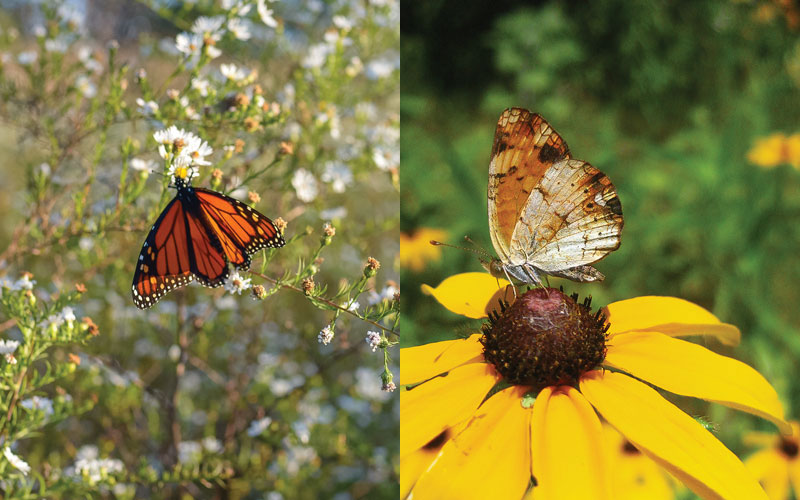
If exploring the meadow for butterflies and pollinators sounds exciting, a few tips will increase your success. Butterflies tend to like to fly on warm, sunny, still days, especially during midday. A pair of dedicated butterfly binoculars can help. These optics are close focus, bringing nearby objects even closer. Birdwatchers use binoculars that focus far into the distance. Another tip: turn your binoculars upside down and they become a makeshift magnifying glass.
New England Aster also provides nectar and pollen for moths, beetles, and flies — not house flies, but a group of flies called “flower flies”, “hover flies” or syrphid flies. These flies tend to look like small bees. The larvae of some species feed on insects like aphids. Syrphid flies are not common kitchen pests, indeed!
Spotted Joe Pye Weed (Eutrochium maculatum) is another showy wildflower found at White Lake. The light pinkish-purple blooms are arranged in tiered clusters shaped like cotton candy. The lightly fragrant (get close!) flowers are a butterfly magnet, and in my experience, are beloved by Fritillaries in particular.
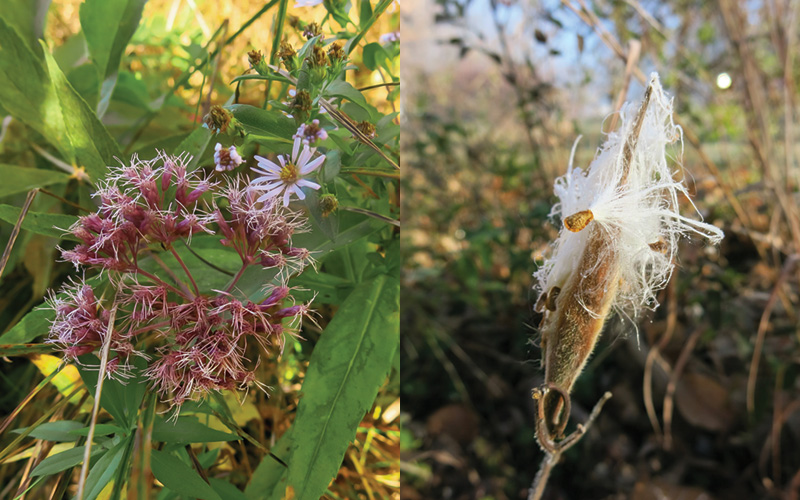
Hints of mid-summer glory are found in abundant seed heads throughout the meadow. Wild Bergamot (Monarda fistulosa) has nickel-sized globe-shaped seed heads that smell of thyme. Winter resident birds like Dark-eyed Juncos eat the tiny seeds of Wild Bergamot. Elongated pods of Butterfly Milkweed (Asclepias tuberosa) are beginning to split open in fall. Watch for featherweight, silvery orbs on the wind, carrying a single seed. Both these wildflowers grow farther away from the lake shore, where soils are dryer and have suitable drainage.
The trail continues into a charismatic forest, filled with craggy limestone outcroppings covered in unique ferns and wildflowers. Make sure to visit the ruins of a lime kiln and marl works on the opposite side of the lake.
The parking lot on Stillwater Road is popular access point for the boat launch. The site is worth visiting year-round.
Heading east into Chester Township in Morris county, the trails near Elizabeth D. Kay Environmental Center at Black River County Park feature another diverse meadow. Like the White Lake meadow, this open habitat ranges from wet to dry, and features an array of colorful fall blooms. In total, the preserve has approximately eighty acres of meadows.
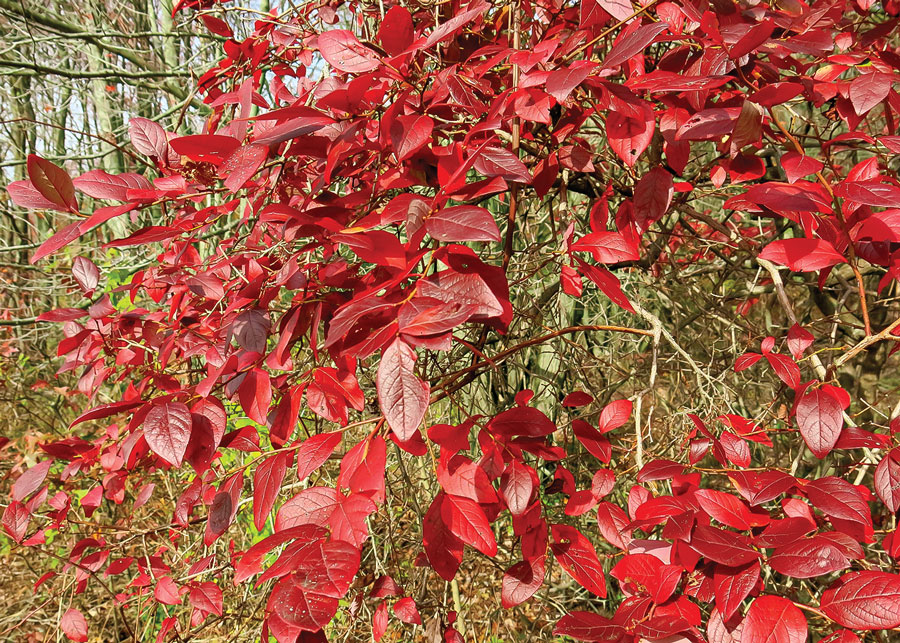
Familiar faces like New England Aster thrive here, as well as another large, purple-blooming wildflower — New York Ironweed (Vernonia noveboracensis). This gorgeous plant can be found in large drifts in many wet meadows throughout New Jersey. It’s unpalatable to mammalian herbivores like white-tailed deer and domestic cows. While mammals may not like New York Ironweed foliage, butterflies find ample nectar and pollen in the flowers. Great-spangled Fritillaries and Tiger Swallowtails, both large and showy butterflies, are frequent visitors.
One of more common native wildflowers at the Kay meadows is Wrinkleleaf Goldenrod (Solidago rugosa). Found throughout the state in old fields and other open habitats, this species can grow as much as five feet and draws pollinators of all types, especially bees. It can be recognized by its course, rough leaves and arching blooms. Some of this plant’s success can be attributed to its spreading, rhizomatous roots system. Gray Goldenrod (Solidago nemoralis) is found in distinct clumps in drier areas of the meadow.
With abundant yellow flowers, goldenrod is often blamed for autumn pollen allergies. However, wind pollinated plants like grasses and Ragweed are more likely culprits. Insect pollinated plants, including the goldenrods, typically hold their pollen within the flower structure.
Along the trail, various seeds are forming, including those of Dogbane (Apocynum cannabinum). The pods of Dogbane look like long, extremely thin bean pods. The pods eventually split open, revealing small seeds attached to a fluffy wind-borne globe. The foliage is similar to Swamp Milkweed, which is also present at the meadow. Just like milkweed species, Dogbane exudes a milky sap when the leaves or stems are cut.
Dogbane is also called Indian Hemp, revealing a traditional use for the plant. After the plant goes dormant, the outer layer of the stem can be scraped away. The inner fibers are soft and silky, yet strong, and can be fashioned into an effective auburn-colored twine.
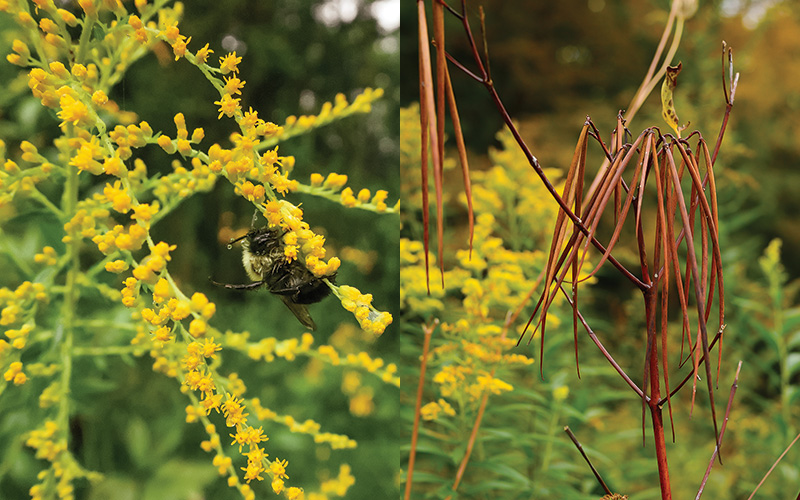
For the careful observer, more tiny wonders abound in the meadow’s wet soils. Willow-herb (Epilobium coloratum) bears its seeds in slender capsules about an inch long. Like other seeds that are spread by the wind, pappus hairs attach to one end of the seed. These fluffy hairs loft the seed in the air, carrying it from the parent plant community. It’s also believed that when the seed lands on the ground, the pappus becomes wet and adheres to the soil, encouraging germination the following spring.
While most casual visitors will focus on the flowers, native grasses have a special beauty and ecological role. Little Bluestem (Schizachyrium scoparium) is an abundant inhabitant here. Thin, elegant stems are green and purple-ish in late summer to fall, turning bronze and remaining upright as the weather cools and snow falls. The hollow stems of the grass can be home to overwintering insects, and overwintering birds will enjoy its seeds. Last, butterflies utilize various native grasses as larval host plants. Little Bluestem feeds the caterpillar stage of numerous skipper butterflies, which tend to be small with orange and brown patterning.
Meadows often have signs of transition to shrubland or a future forest, filled with not only wildflowers but also trees and shrubs. The meadows are maintained with periodic mowing and prescribed burns conducted by the NJ Forest Service. These activities keep the meadow from a full succession to forest, but these vigorous plants can resprout or reseed with the help of wildlife.
The meadow includes several fruit-bearing shrubs Silky Dogwood (Cornus amomum), Gray Dogwood (Cornus racemosa), and Highbush Blueberry (Vaccinium corymbosum). These showy species can be found in moist, sunny spots. Silky Dogwood bears clusters of blue fruit and has red to reddish-brown bark, while Gray Dogwood has white fruit and gray bark. The dogwoods’ fruits mature in autumn and are relished by birds including Robins, Catbirds and other birds migrating southwards. Brilliant red autumn foliage will bedeck all three of these common shrubs.
Two other attractive shrubs dot the meadows — Blackhaw (Viburnum prunifolium), a native viburnum, and Winterberry (Ilex verticillata), a deciduous holly. These, too, prefer sunny open areas to partly sunny forest edges. The Blackhaw specimens here are quite large, and their branches arch eccentrically towards the light. The specific (second half) of their scientific name “prunifolium” translates to “cherry-like foliage”. Notice the abundant, pendulous clusters of dark blue-black fruits — they are edible (make sure you know your plants before sampling!). Winterberry is related to the prickly, evergreen American Holly, but Winterberry loses foliage in the fall and lacks prickles on its leaves. Look for small, bright red fruits on this native ornamental. They appear only on the female individuals.
The trails at through the forested portions of Black River County Park are worth visiting, as well. As of publication, nature programs are ongoing at Kay Environmental Center.
Whether you like to identify wildflowers or simply enjoy an easy stroll, the meadows at White Lake Natural Resource Area and Kay Environmental Center will be a rewarding visit. Make sure to pause at a few blooms and see who else is visiting the flowers.
The Centenary Stage Company produces professional equity theatre and also a wide variety of top-flight musical and dance events throughout the year.
Choose and Cut from 10,000 trees! Blue Spruce, Norway Spruce, White Pine, Scotch Pine Fraser Fir, Canaan fir, Douglas Fir. Family run on preserved farmland. Open Nov 29 - Dec 23, Tues-Sunday, 9-4. Easy Access from Routes 78 or 80.
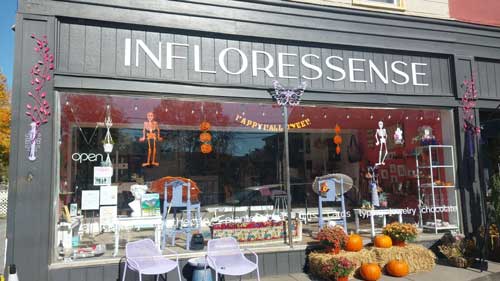
A fine art gallery like no other! Unique, handmade gifts and cards as well as yoga, meditation, and continued learning lectures. Come in Saturdays for all-day open mic and Sundays to try unique nootropic chocolate or mushroom coffee. Browse the $5 books in the Believe Book Nook while you nibble and sip.
The 8,461 acre park includes the 2500-acre Deer Lake Park, Waterloo Village, mountain bike and horseback trails.
Consider Rutherfurd Hall as refuge and sanctuary in similar ways now, as it served a distinguished family a hundred years ago.